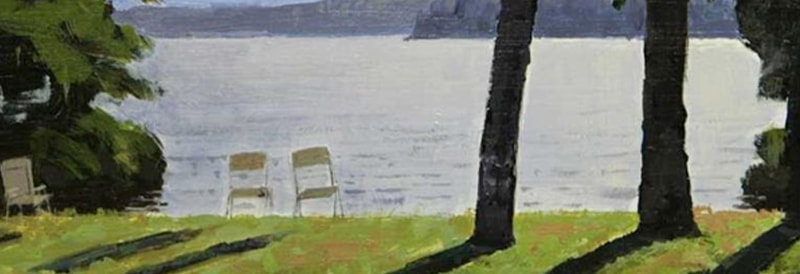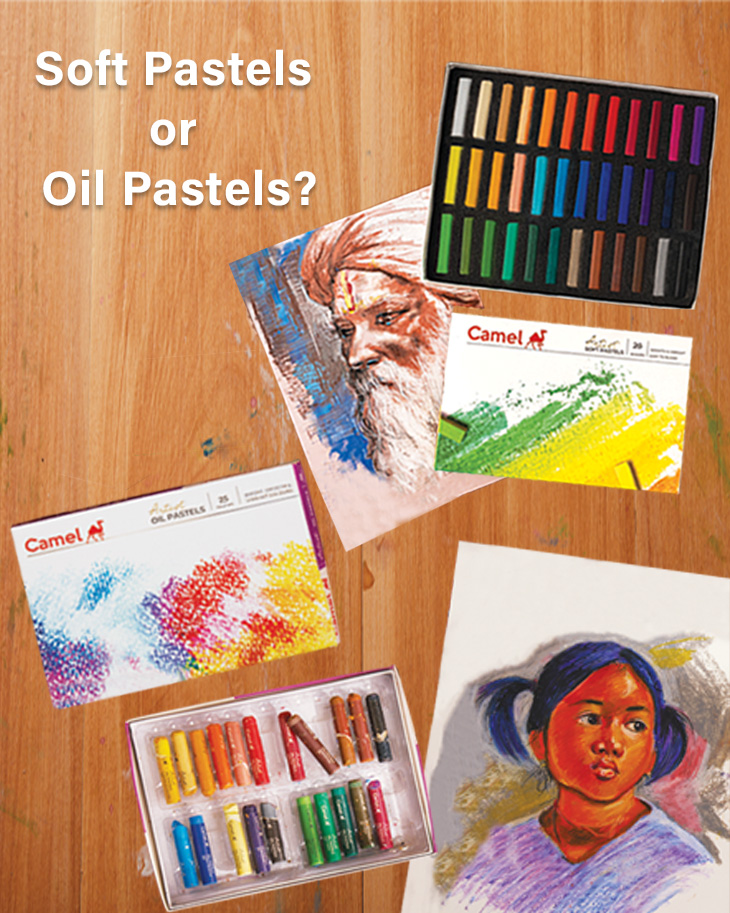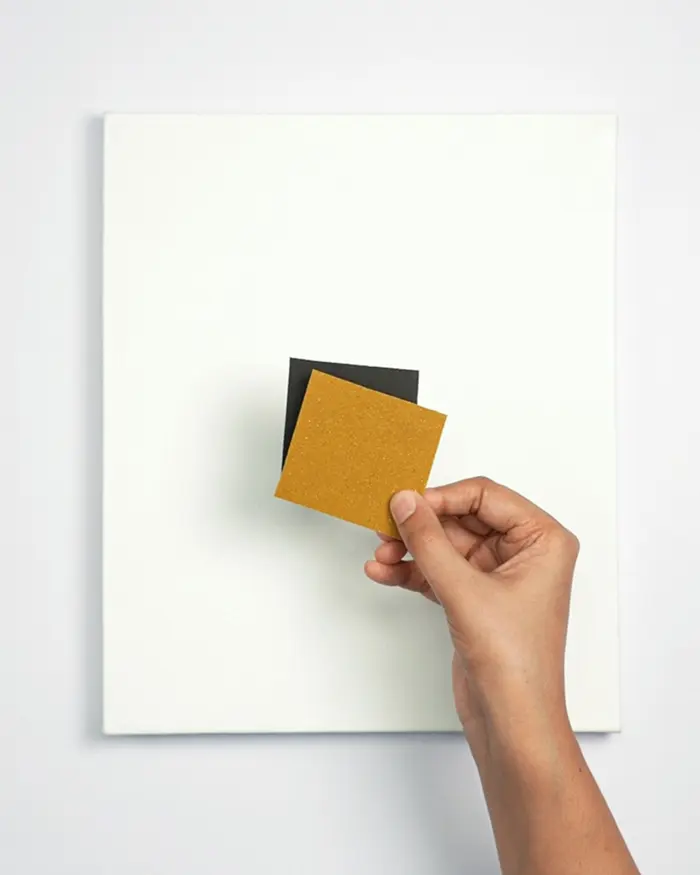In a world where fine art creates immense interest, you have an abundance of materials to inspire your artwork. Acrylic colours can be used along with pastels, which is a great way to adapt to the dynamic world of art. Meanwhile, a medium is any liquid such as oil, water, glue, modelling paste, etc. used with paint to get the desired result.

With acrylic mediums, you can modify properties of the subject like the thickness, shine, drying time, and texture, wherever you find it necessary.
When you want to dilute acrylic colours, mixing them with water is possible but it is not advisable. After the water and the acrylic colour reach a certain ratio, the paint will lose its adherence properties. This makes the paint watery and increases its transparency, resulting in uneven coverage.

In the painting showcased above, titled ‘White Rock’, some of the areas of translucent orange and blue paint have been painted with acrylic colour and gel medium to bring out a translucent look.
Getting this level of finesse takes good practice and an understanding of what works best while working with acrylic paints. Here’s an overview to understand the mediums you can use while painting with acrylic colours.
Understanding mediums
1. Consistency
or those of you who are new to mediums, they come in different types of consistencies – ranging from liquid to heavy.
Liquid gel medium to increase fluidity
If you find the paint to be too opaque for a particular section in your painting, then your best bet to make it more transparent without getting uneven coverage is to use a liquid gel medium. In this way, you can increase the paint’s transparency without compromising the consistency and adhesive properties. Liquid gels are also self-levelling, making them a convenient option for glazing. Glazing aids you in adding a thin and transparent layer of paint, just enough to modify the colour underneath.
Heavy body medium to increase consistency
If you want to create visible brush strokes, use heavy body mediums. Heavy body mediums will help you add interesting strokes with the brush and create beautiful designs, over a layer of already applied paint.
Gel medium for desired finish
Gel mediums come in gloss, semi-gloss, and matte finish. Using this finish will alter the paint’s shine. When you find sections in your painting that are glossier than other areas, use a gel medium finish to correct this and to create an even tonality, as desired.
2. Adhesives

Most of the gel mediums can also be used as adhesives. This works well when creating collages. In order to render the best result, try using a gel medium with a gloss finish instead of a matte finish.
In the below artwork, gel medium has been used as an adhesive to fix a thread used in the art piece.

You can even use gel medium to add collage paper on an acrylic painting, as shown below.
Texture mediums
Texture mediums, as the name suggests, are used to modify the texture of acrylic colours.
1. Modelling paste

The modelling paste medium is the most commonly used texture medium by artists. Usually made out of marble paste, this opaque-white heavy gel will adhere to most surfaces. You can use it to create 3D textures within your painting. Once it dries, modelling paint can then be sanded over and/or painted over.
2. Acrylic ground for pastels

When you want to create a mixed media piece, you can apply a medium with a fine texture. This allows you to use pastels on top of the paint on the canvas.
Medium to increase flow

Some mediums can increase the flow of acrylic colours for increased straining properties of the canvas. It can also be used when you want to use the ‘pour the paint’ technique in your painting.
Medium that dries slowly
One of the challenges while painting with acrylic colours could be that it dries quickly, making it harder to blend colours on your canvas. You can add a slow drying medium to your acrylic paint to double the drying time. This enables the acrylic colour to behave more like oil colours, allowing you enough time to blend colours.
Now, the next time you opt to paint with acrylic colours, you know which medium you will need to keep handy to get the right output. Simply add it to the paint you want to use and begin painting!
Did this article help you understand acrylic mediums better?
Share your thoughts with us in the comments below.
Leave a comment
Comment added
Comment updated
Comment deleted
More inspiration
“
“You don't choose art. Art chooses you.”








